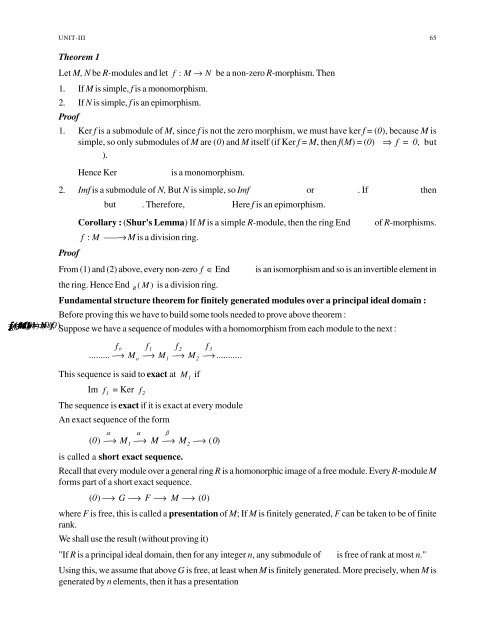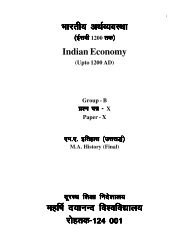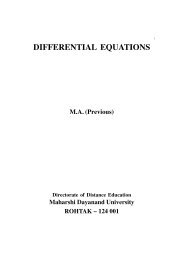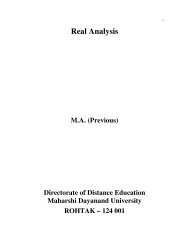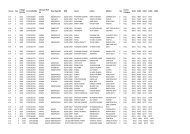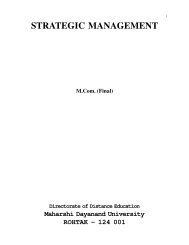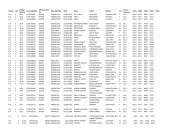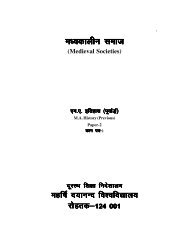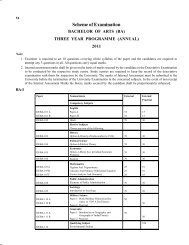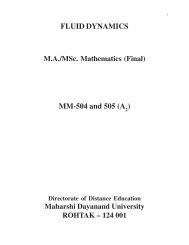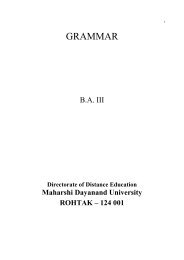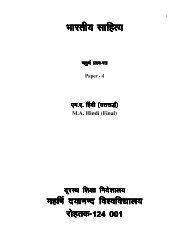Advanced Abstract Algebra - Maharshi Dayanand University, Rohtak
Advanced Abstract Algebra - Maharshi Dayanand University, Rohtak
Advanced Abstract Algebra - Maharshi Dayanand University, Rohtak
Create successful ePaper yourself
Turn your PDF publications into a flip-book with our unique Google optimized e-Paper software.
UNIT-III<br />
65<br />
Theorem 1<br />
Let M, N be R-modules and let f : M → N be a non-zero R-morphism. Then<br />
1. If M is simple, f is a monomorphism.<br />
2. If N is simple, f is an epimorphism.<br />
Proof<br />
1. Ker f is a submodule of M, since f is not the zero morphism, we must have ker f = (0), because M is<br />
simple, so only submodules of M are (0) and M itself (if Ker f = M, then f(M) = (0) ⇒ f = 0, but<br />
).<br />
Hence Ker<br />
is a monomorphism.<br />
2. Imf is a submodule of N, But N is simple, so Imf<br />
but<br />
. Therefore,<br />
Corollary : (Shur's Lemma) If M is a simple R-module, then the ring End of R-morphisms.<br />
f : M –––→ M is a division ring.<br />
Proof<br />
From (1) and (2) above, every non-zero f ∈ End is an isomorphism and so is an invertible element in<br />
the ring. Hence End R ( M ) is a division ring.<br />
Fundamental structure theorem for finitely generated modules over a principal ideal domain :<br />
Before proving this we have to build some tools needed to prove above theorem :<br />
= f = ≠f<br />
( 0<br />
M<br />
) =<br />
) <br />
N( = 0.<br />
(),<br />
f0<br />
)<br />
R( n M<br />
)<br />
Suppose we have a sequence of modules with a homomorphism from each module to the next :<br />
f o f1<br />
f 2 f 3<br />
......... – → M – → M – → M – → ...........<br />
This sequence is said to exact at M 1<br />
if<br />
Im f 1<br />
= Ker f 2<br />
o<br />
The sequence is exact if it is exact at every module<br />
An exact sequence of the form<br />
α α β<br />
( 0) – → M – → M – → M – → ( 0)<br />
1 2<br />
is called a short exact sequence.<br />
1<br />
2<br />
or<br />
Here f is an epimorphism.<br />
Recall that every module over a general ring R is a homonorphic image of a free module. Every R-module M<br />
forms part of a short exact sequence.<br />
( 0) – → G – → F – → M – → ( 0)<br />
where F is free, this is called a presentation of M; If M is finitely generated, F can be taken to be of finite<br />
rank.<br />
We shall use the result (without proving it)<br />
"If R is a principal ideal domain, then for any integer n, any submodule of<br />
. If<br />
is free of rank at most n."<br />
Using this, we assume that above G is free, at least when M is finitely generated. More precisely, when M is<br />
generated by n elements, then it has a presentation<br />
then


